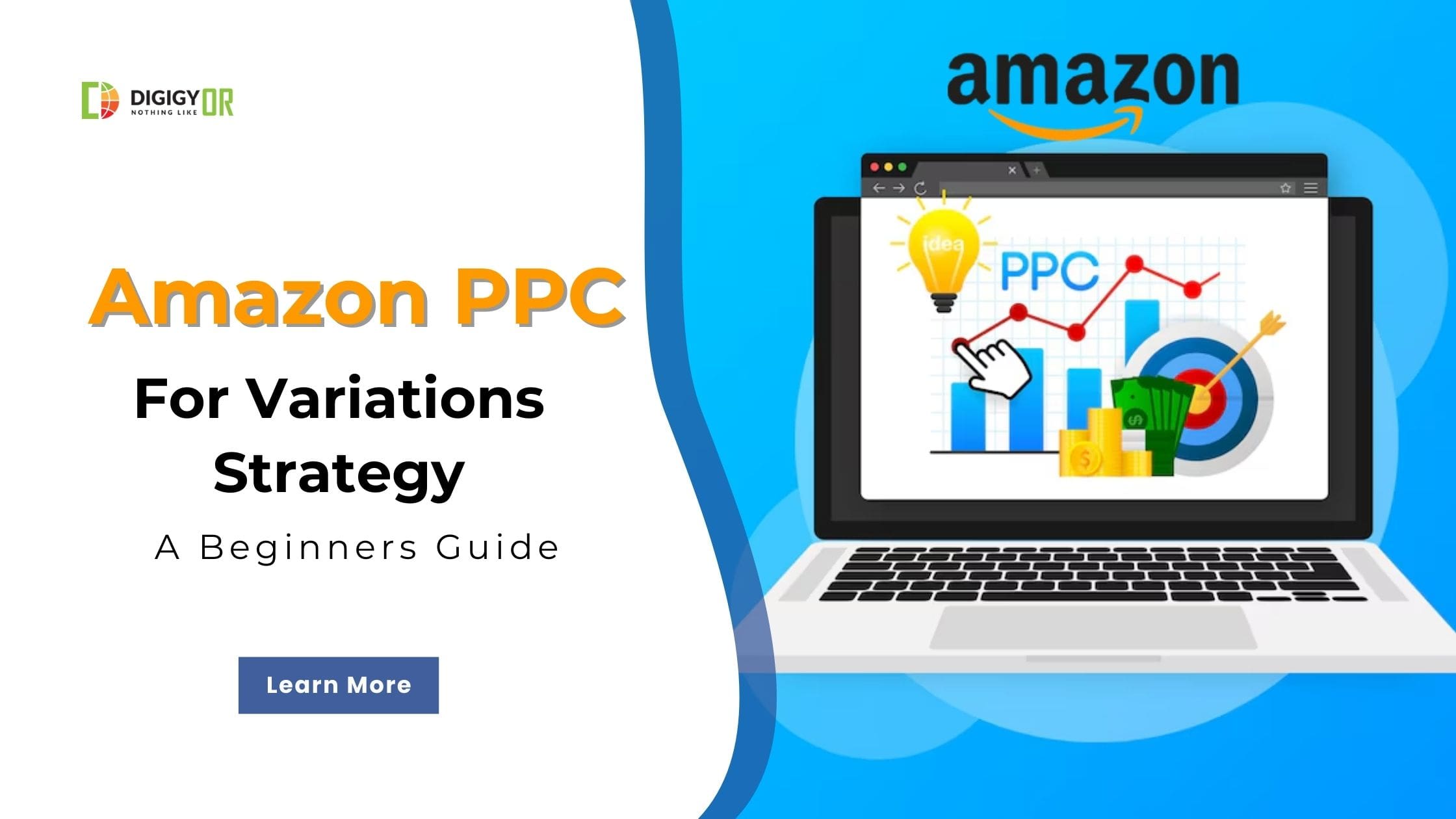Amazon PPC for Variations Strategy Explained
On Amazon, hundreds of thousands of products are available in multiple versions. Size, material, form, quantity, and color are just some examples of these variations.
Running an ad for a variation product is challenging compared to a single variant product. Sellers are often confused about whether to run a single campaign for all variants or make different Amazon PPC variations campaigns.
Today, we will discuss the topic in depth. Before we begin, let us discuss what Amazon PPC is and how it works.
Amazon PPC
Amazon offers its sellers a service called Amazon PPC. Using this service, sellers can place an Ad on the Amazon search page and, in return, they have to pay for every click they get on their ad. The charge for every click is known as PPC (Pay-Per-Click).
How does it work?
When a seller begins the process of creating a campaign, Amazon asks them to choose a target type. A seller needs to select either auto keyword target or manual keyword target.
In automatic targeting, the seller allows Amazon to display ads using the best keywords according to its software. Meanwhile, in manual targeting, the seller submits a list of keywords to Amazon to run ads.
It is up to the seller to choose between the two options. If you are a new seller, you can go with auto ads targeting. This will help you gather some targeted keywords.
If you are an expert in keyword research and understand the basics of Amazon PPC, you may prefer manual keyword targeting for Amazon ads.
Amazon PPC for variations
When creating a campaign for a variation listing, we should make separate campaigns for each variation. In this way, you can target a specific audience for each of your products.
E.g.
David is a seller of water bottles in different colors and capacities. Red, white, brown, yellow, etc, and in 300 ml, 500 ml, and 1000 ml capacities.
Making different campaigns for colors and capacity keywords, David can feed the correct variation ad to the audience who is looking for the exact product.
Amazon will show your ad to customers who are looking for a red bottle instead of a red bottle listing to a person willing to buy a yellow bottle.
Similarly, it applies to capacity variations. A 300 ml bottle seeker has no intention to purchase a 1000 ml bottle. So, making a separate campaign for variations will market the right product to the right buyer.
Keyword research for variations
Using Amazon keyword research tools like Sonar and Jungle Scout, you can prepare a list of keywords for each variation.
Also, you can run a trial auto-target campaign for one or two variations for a week or two. This will help you make a list of keywords and filter them according to variations.
Once your keyword list for each variation has been prepared, create manual campaigns. Using combinations of broad, exact, and phrase match types, test the keyword performances and take actions weekly or monthly.
Pause the keywords that are not converting sales and exhausting the budget. Bid higher on keywords that bring sales. This little monitoring and action taking will help you keep campaigns optimized.
Negative keywords list
To understand negative keywords or terms, we will use an example. Suppose you sell a plastic bottle. Displaying ads on steel, copper, etc., with keywords will not lead you to sales.
Similarly, a yellow bottle product ad on a brown bottle is not a good fit. So, look for and think of negative words for every variant and put them into the negative keywords list under their campaigns. This will ensure you get refined clicks through targeted visibility.
FAQs
1. Should I make separate campaigns for variations?
Yes, creating separate campaigns for variations is a good practice.
2. Should I run ads for a single variation or multiple variations?
If your product has multiple variations, then you should run ads for different variations.
3. How to do keyword research for Amazon PPC for variations?
You can use the Amazon search box or keyword research tools like Sonar to do keyword planning for variations.


